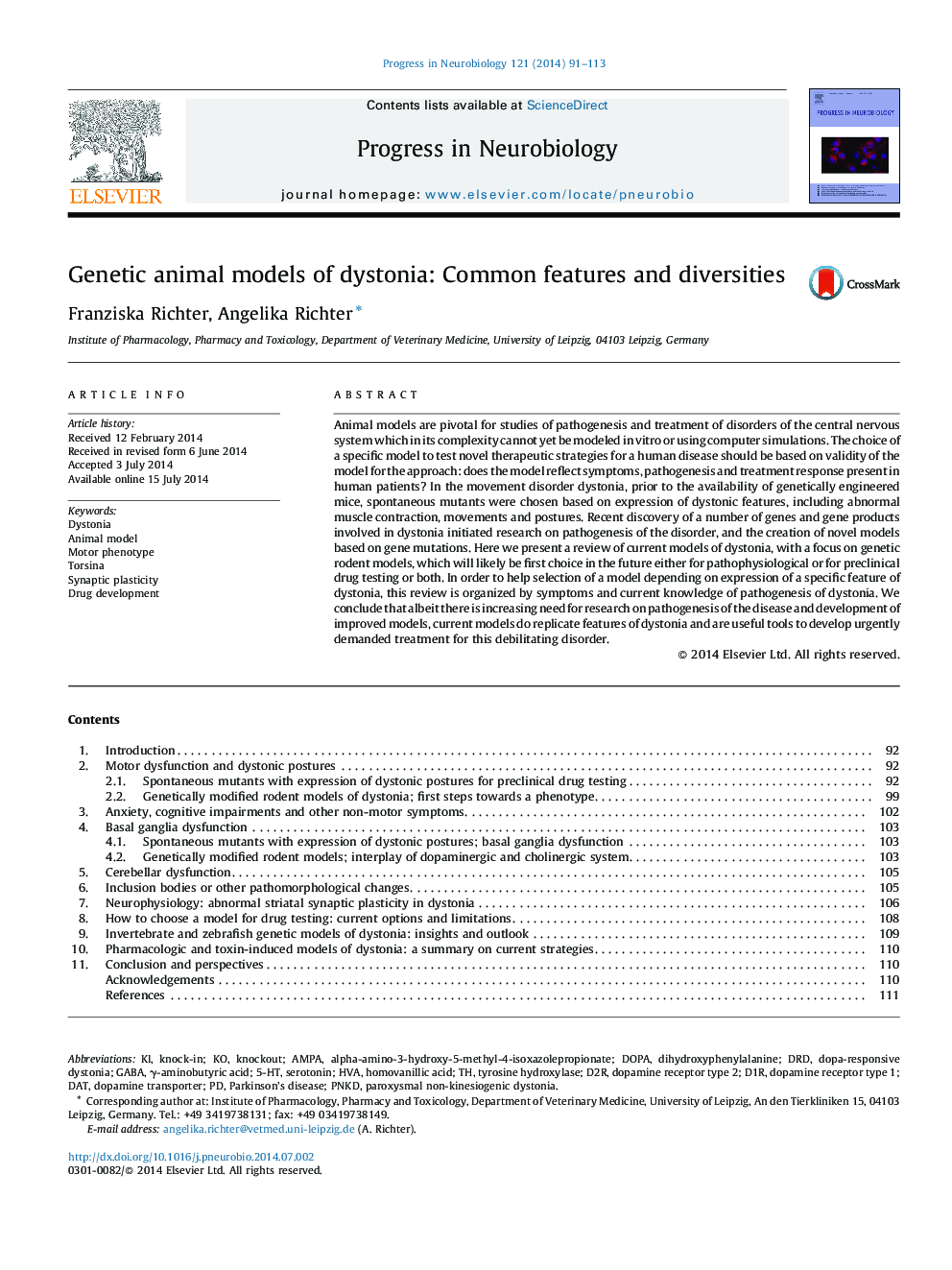| Article ID | Journal | Published Year | Pages | File Type |
|---|---|---|---|---|
| 6286484 | Progress in Neurobiology | 2014 | 23 Pages |
â¢Identification of mutations in dystonia prompted development of novel animal models.â¢Models have only partially been investigated for construct, face and predictive validity.â¢Motor dysfunction appears different in a rodent model than expected from the human disease.â¢Synaptic plasticity alterations linked to the dopamine and cholinergic system are common.â¢Current disease models have been successfully used to test novel therapeutics.
Animal models are pivotal for studies of pathogenesis and treatment of disorders of the central nervous system which in its complexity cannot yet be modeled in vitro or using computer simulations. The choice of a specific model to test novel therapeutic strategies for a human disease should be based on validity of the model for the approach: does the model reflect symptoms, pathogenesis and treatment response present in human patients? In the movement disorder dystonia, prior to the availability of genetically engineered mice, spontaneous mutants were chosen based on expression of dystonic features, including abnormal muscle contraction, movements and postures. Recent discovery of a number of genes and gene products involved in dystonia initiated research on pathogenesis of the disorder, and the creation of novel models based on gene mutations. Here we present a review of current models of dystonia, with a focus on genetic rodent models, which will likely be first choice in the future either for pathophysiological or for preclinical drug testing or both. In order to help selection of a model depending on expression of a specific feature of dystonia, this review is organized by symptoms and current knowledge of pathogenesis of dystonia. We conclude that albeit there is increasing need for research on pathogenesis of the disease and development of improved models, current models do replicate features of dystonia and are useful tools to develop urgently demanded treatment for this debilitating disorder.
